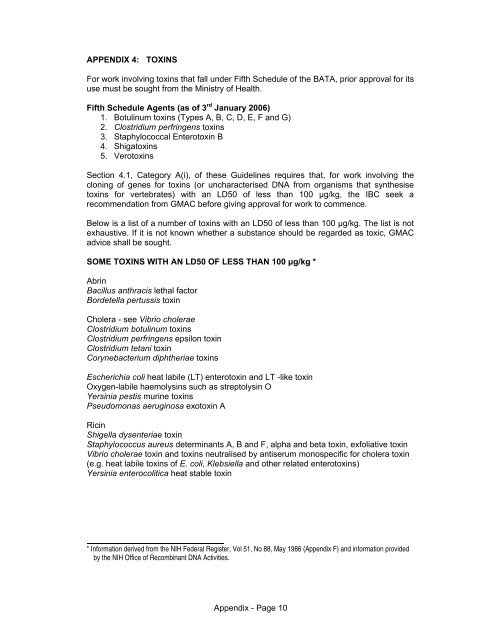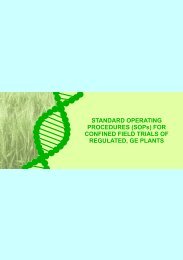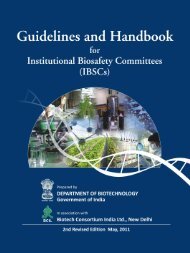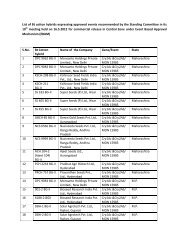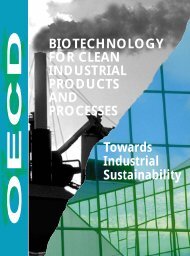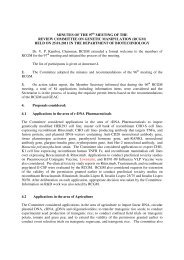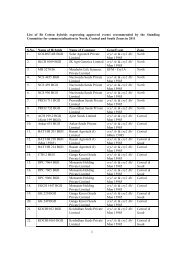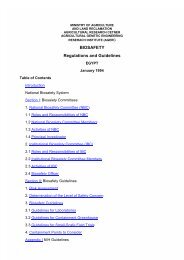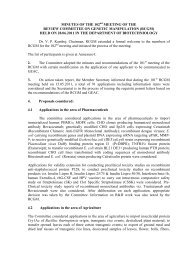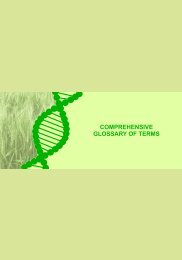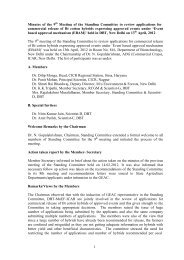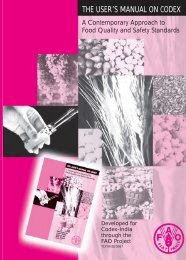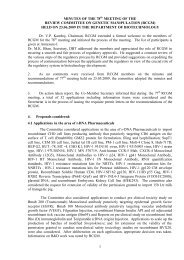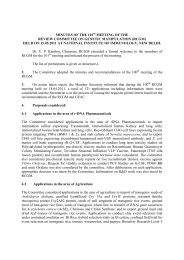Biosafety Guidelines For Research On Genetically Modified ...
Biosafety Guidelines For Research On Genetically Modified ...
Biosafety Guidelines For Research On Genetically Modified ...
Create successful ePaper yourself
Turn your PDF publications into a flip-book with our unique Google optimized e-Paper software.
APPENDIX 4: TOXINS<br />
<strong>For</strong> work involving toxins that fall under Fifth Schedule of the BATA, prior approval for its<br />
use must be sought from the Ministry of Health.<br />
Fifth Schedule Agents (as of 3 rd January 2006)<br />
1. Botulinum toxins (Types A, B, C, D, E, F and G)<br />
2. Clostridium perfringens toxins<br />
3. Staphylococcal Enterotoxin B<br />
4. Shigatoxins<br />
5. Verotoxins<br />
Section 4.1, Category A(i), of these <strong>Guidelines</strong> requires that, for work involving the<br />
cloning of genes for toxins (or uncharacterised DNA from organisms that synthesise<br />
toxins for vertebrates) with an LD50 of less than 100 µg/kg, the IBC seek a<br />
recommendation from GMAC before giving approval for work to commence.<br />
Below is a list of a number of toxins with an LD50 of less than 100 µg/kg. The list is not<br />
exhaustive. If it is not known whether a substance should be regarded as toxic, GMAC<br />
advice shall be sought.<br />
SOME TOXINS WITH AN LD50 OF LESS THAN 100 μg/kg *<br />
Abrin<br />
Bacillus anthracis lethal factor<br />
Bordetella pertussis toxin<br />
Cholera - see Vibrio cholerae<br />
Clostridium botulinum toxins<br />
Clostridium perfringens epsilon toxin<br />
Clostridium tetani toxin<br />
Corynebacterium diphtheriae toxins<br />
Escherichia coli heat labile (LT) enterotoxin and LT -like toxin<br />
Oxygen-labile haemolysins such as streptolysin O<br />
Yersinia pestis murine toxins<br />
Pseudomonas aeruginosa exotoxin A<br />
Ricin<br />
Shigella dysenteriae toxin<br />
Staphylococcus aureus determinants A, B and F, alpha and beta toxin, exfoliative toxin<br />
Vibrio cholerae toxin and toxins neutralised by antiserum monospecific for cholera toxin<br />
(e.g. heat labile toxins of E. coli, Klebsiella and other related enterotoxins)<br />
Yersinia enterocolitica heat stable toxin<br />
* Information derived from the NIH Federal Register, Vol 51, No 88, May 1986 (Appendix F) and information provided<br />
by the NIH Office of Recombinant DNA Activities.<br />
Appendix - Page 10


